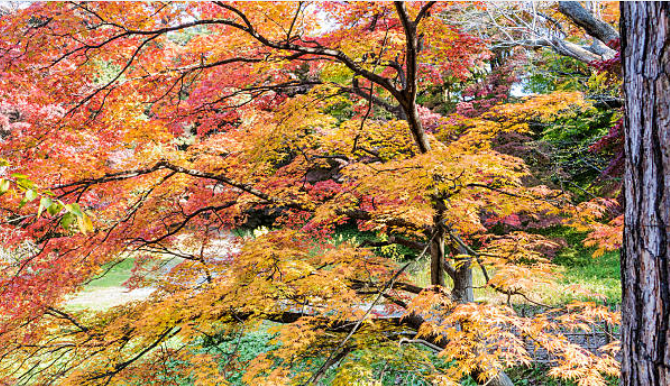Orangeola Japanese Maple: A Complete Guide
Orangeola Japanese Maple is a beautiful ornamental tree that is popular among gardeners and landscaping enthusiasts. Known for its vibrant orange-red leaves, delicate foliage, and graceful branches, the Orangeola Japanese Maple is a stunning addition to any garden or landscape. In this article, we will cover everything you need to know about this amazing tree, including its history, characteristics, care, and maintenance.
History and Origin
The Orangeola Japanese Maple, also known as the Acer palmatum dissectum 'Orangeola', is a cultivar of the Japanese maple tree. It is believed to have originated in Japan or China, but its exact origin is unknown. The tree was first introduced to the United States in the early 1900s and has since become a popular ornamental tree for its stunning appearance.
Characteristics
The Orangeola Japanese Maple is a deciduous tree that typically grows to a height of 8 to 10 feet, with a spread of 6 to 8 feet. Its leaves are deeply lobed and finely cut, and they are a beautiful orange-red color that changes to a deeper red in the fall. The tree's branches are gracefully arching, giving it a delicate and elegant appearance.
Care and Maintenance
The Orangeola Japanese Maple is relatively easy to care for, but it does require some attention and maintenance. Here are some tips for keeping your tree healthy and beautiful:
- Soil: The Orangeola Japanese Maple prefers moist, well-draining soil that is slightly acidic. It is important to avoid planting the tree in soil that is too wet or dry, as this can cause stress and damage to the tree.
- Sunlight: The Orangeola Japanese Maple prefers partial shade to full sun. It is important to provide the tree with some shade during the hottest part of the day, as too much direct sunlight can scorch its delicate leaves.
- Watering: The Orangeola Japanese Maple requires regular watering, especially during hot, dry weather. It is important to water the tree deeply so that the water reaches the root system.
- Pruning: The Orangeola Japanese Maple requires minimal pruning, but it is important to remove any dead or damaged branches to promote healthy growth.
- Fertilizer: The Orangeola Japanese Maple does not require a lot of fertilizer, but it can benefit from an application of slow-release fertilizer in the spring.
Unique Facts
- The Orangeola Japanese Maple is a slow-growing tree, which means it can take several years to reach its full height and spread.
- The tree's delicate foliage is vulnerable to damage from wind, snow, and ice, so it is important to provide some protection during harsh weather conditions.
- The Orangeola Japanese Maple is a popular choice for bonsai enthusiasts, due to its small size and delicate appearance.
In conclusion, the Orangeola Japanese Maple is a stunning and unique tree that can enhance the beauty of any garden or landscape. By following the care and maintenance tips outlined in this article, you can ensure that your tree remains healthy and beautiful for years to come.




Comments
Post a Comment